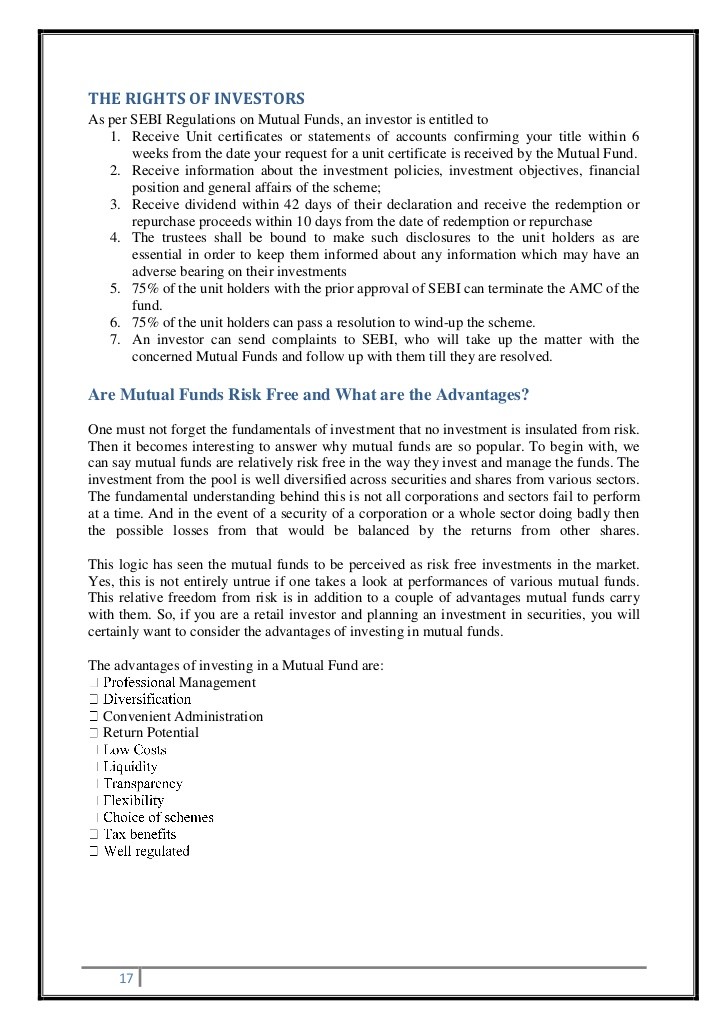How to analyze the performance of a mutual fund
Post on: 14 Апрель, 2015 No Comment

How to analyze the performance of a mutual fund? By Kotak Securities
Every investor today is intimidated by the task of choosing a mutual fund and why not there are hundreds of companies with thousands of funds spread across hundreds of different market sectors but as Alfred .A. Montapert (motivational author) once said Nobody ever did, or ever will, escape the consequences of his choices so its imperative for investors to do a complete analysis before buying a mutual fund.
Following are the steps one should keep in mind while analyzing the performance of a mutual fund before buying:-
Need fit analysis- The first thing you need to understand before analyzing or buying a mutual fund is your risk return profile. Return in form of average return expected and risk in the form of deviations or volatility in returns .This is an essential step because if risk return profiling is not done properly a good performing mutual fund will appear bad to you as it just dont fit your profile so the first and foremost thing before analyzing a mutual fund is getting the risk return profile right. Because there can be a fund which gives good returns but the returns may be volatile but at the same time your needs may require consistent returns thus this fund may not suit you. So its always advisable to understand your risk and return profile first before investing.
Analyzing a mutual fund can be divided into two parts:-
Quantitative review
- Evaluating historical performance In analyzing historical performance the investor needs to see what have been the past returns or historic returns, i.e. what were the returns in the last 1-5 years and how consistent were the returns. Through this investor can also analyze the risks of investing in that fund by finding the deviations and volatility in returns. But the investor should understand that even though the past returns show that the fund was performing well, it in no way means that it will continue to have a good run in future as mentioned in mutual fund prospectus.
- Benchmarking — Investors can also compare the performance of the mutual funds with broad market index to see how much extra return they have generated in comparison with the index. Investors should be very careful in choosing the benchmark and the benchmark should be representative of the style the mutual fund is following otherwise it could lead to wrong conclusions.
- Sharpe ratio — Sharpe ratio is calculated by subtracting the risk free rate from the returns of the mutual fund and then dividing it by the standard deviation of the returns of the mutual fund. This will give you excess returns per unit of risk taken. This measurement is very useful because although one fund can reap higher returns than its peers, it is only a good investment if those higher returns do not come with too much additional risk. The greater a portfolios Sharpe ratio, the better its risk-adjusted performance has been.
- Expenses — Though the funds return u cant control but one thing which you can control is your expense. You should find out the expense ratio which is expressed as percentage of net assets. For example if you have 3000 invested and the expense ratio is 1% than 30 is deducted from your account every year as expense. You should also take a note of the loads on mutual fund though now entry loads are abolished but higher the loads the lesser are your returns. Loads are charges attached to purchase and sales of mutual funds and are termed as front end loads and back end loads. The lesser the loads and expense ratio the better it is for you assuming the same level of returns.
Quantitative review
- Management -You should be aware who owns the fund, who is the fund manager what are his qualifications, what is his past record, how many times the fund has changed managers, what is the investment strategy and whether the fund adhere to the strategy or not. These are some important questions one should keep in mind while analyzing a mutual fund.
Things to avoid while analyzing a mutual fund
Combining these quantitative and qualitative techniques and avoiding the above mistakes investors can analyze the performance of various mutual funds and buy a mutual fund according to their risk and return profile.














